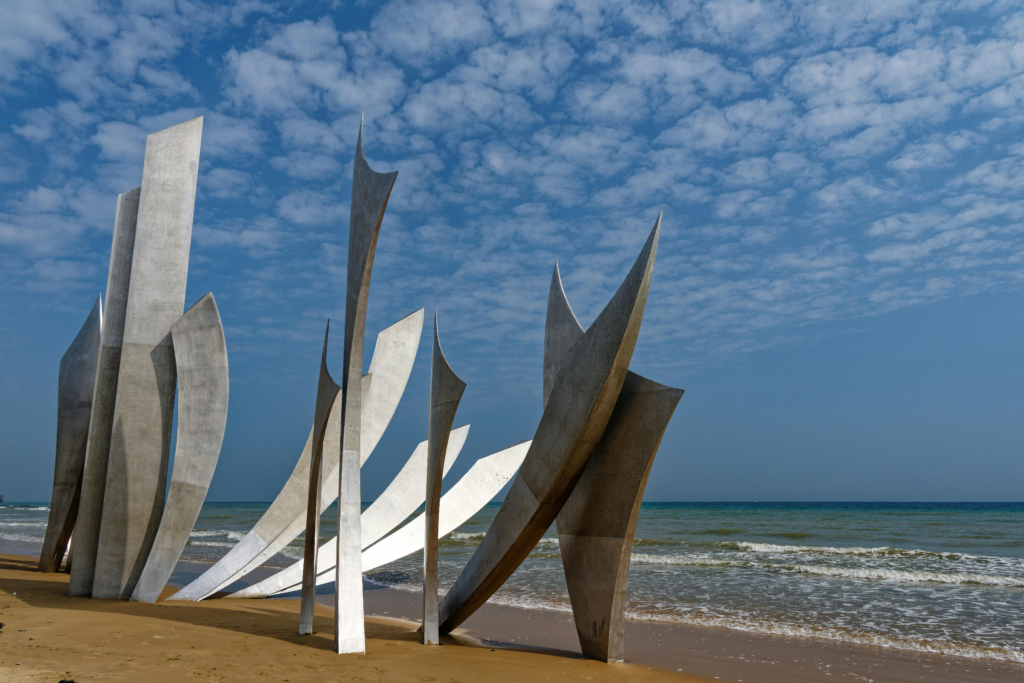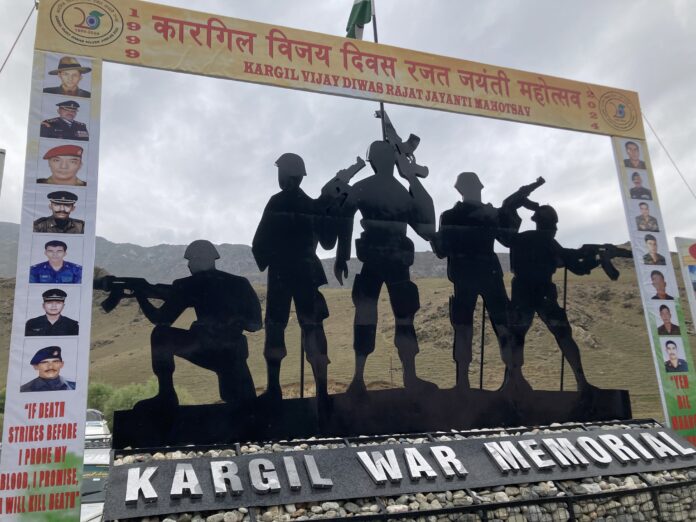On a crisp January morning, as India celebrated Army Day, an exciting chapter in the nation’s history unfolded when Defence Minister Rajnath Singh announced the launch of Bharat Ranbhoomi Darshan – a battlefield tourism initiative by the Indian Army in partnership with the Ministry of Tourism.
This innovative venture seeks to transform the country’s borders and battlegrounds into destinations that narrate tales of valour, sacrifice, and historical significance. More than just a project to attract visitors, it’s a mission to reconnect Indians with their military heritage, to honour the sacrifices of the brave, and to set historical records straight.
In its first phase, 77 historically significant battlegrounds will open their gates to visitors, offering a glimpse into the locations where India’s history was shaped. Among these are legendary sites such as Nathu La and Bum La in Arunachal Pradesh, the breathtaking Pangong Tso in Ladakh, the strategic Lipulekh Pass in Uttarakhand, and the site of the Cho-La clash in Sikkim, each brimming with stories of heroism and strategic brilliance.
Even though this brings a new chapter for India, for the rest of the world battlefield tourism is not a new thing. This segment of travel takes visitors to places marked by conflict and military history. This niche of battlefield tourism combines history, education, and remembrance, offering travellers a chance to engage with the stories and sacrifices that have shaped nations. From the hallowed grounds of the American Civil War to India’s storied battlegrounds, this form of tourism bridges the past and present, inspiring reflection and a deeper understanding of humanity’s complex history.
What is Battlefield Tourism?
Battlefield tourism also known as conflict tourism is a type of heritage tourism that focuses on visiting historic battle sites, war memorials, and military museums. These locations commemorate significant military events, allowing visitors to learn about historical conflicts, pay respects to those who served, and gain insights into the geopolitical landscape of the time.
Battlefield tourism can range from exploring the D-Day beaches of Normandy in France to exploring Gettysburg in the United States. In India, sites like Longewala, Siachen, and Kargil attract history enthusiasts and patriots who wish to honour the bravery of soldiers who defended the nation.

Image Credit: Billy Wilson, Flickr
An excellent example of battlefield tourism is Gettysburg, a key site from the American Civil War. Known for the decisive battle fought there in 1863, Gettysburg attracts millions of visitors annually who wish to walk the grounds where history was made. Tours of the battlefield, including stops at significant landmarks like Little Round Top telling the story of the Union’s successful defence against the Confederate forces and the Gettysburg National Cemetery, provide a vivid picture of the war’s impact.
In India, Longewala, a site from the 1971 Indo-Pak War, is another such site. Learning about a battle in books or newspaper is different from picturizing it with visiting the sites, understanding the dilemmas, the actions, the threats that the soldiers faced. Visitors can explore this iconic battleground in Rajasthan, where a small Indian contingent heroically defended their post against a much larger force. The site includes a war museum and preserved tanks, offering a tangible connection to the conflict.
Why Do People Visit Battlefields?
The motivations for visiting battlefields are as diverse as the travelers themselves across the world. Especially the sites of battles during the World Wars and the American Civil Wars are widely visited for a variety of reasons.
To Honor Sacrifices
Many people visit battlefields to pay respects to soldiers who fought and died in historic conflicts. Memorials, cemeteries, and museums often serve as places of reflection and gratitude.
To Understand History
Battlefield tourism provides an immersive way to learn about pivotal events that shaped nations. Standing on the grounds where history unfolded offers a visceral connection that books or documentaries cannot replicate.
Cultural and National Identity
For many, visiting battlefields is a way to connect with their cultural or national heritage. Americans, for instance, visit Civil War sites to explore the roots of their democracy, while Europeans travel to World War battlegrounds to remember the valour of their armed forces and the destruction of the Nazis.
Educational Purposes
Schools and universities often organize trips to battlefields as part of history or political science curricula, allowing students to engage with history in a hands-on manner.
Adventure and Exploration

Image Credit: Jayakumar’s Facebook
Some visitors are drawn by the adventurous aspect of exploring remote or rugged locations associated with military conflicts, such as the Siachen Glacier. The Indian Army organizes a trek or expedition for civilians every year where you need to have peak physical fitness and such determination. They take you up to Kumar Post in Siachen. This is an extremely difficult terrain and mountaineering enthusiasts often dream to take this up.
What is Military Tourism?
Military tourism is a broader term encompassing battlefield tourism but also includes visits to active military bases, defence exhibitions, and military-themed experiences. While battlefield tourism focuses on historical sites, military tourism may also involve learning about modern defence strategies, weaponry, and the lives of active personnel.
For example, in the United States, tourists can visit military academies like West Point or attend airshows featuring cutting-edge fighter jets. In India, events like the Republic Day Parade in New Delhi or exhibitions showcasing indigenous defence technologies attract military enthusiasts and patriots alike.
Battlefield Tourism Around the World
Historic sites across continents draw millions of visitors annually. In Europe, the battlefields of World War I and II are major attractions. The D-Day beaches of Normandy, France, commemorate the Allied invasion, while Flanders Fields in Belgium serve as poignant reminders of the Great War. In the United Kingdom, the Battle of Hastings site and museums in London dedicated to the Blitz are highlights of this kind of tourism. Germany, meanwhile, offers sites like the Berlin Wall Memorial, blending war history with Cold War narratives.

Image Credit: Pexels
In North America, the United States leads with its rich Civil War heritage, featuring destinations such as Gettysburg, Antietam, and Vicksburg, alongside Pearl Harbor in Hawaii, which honors World War II’s Pacific conflict. Canada attracts visitors to Vimy Ridge, a key World War I battlefield, symbolizing Canadian valor and sacrifice.
Asia boasts a mix of ancient and modern battlefield sites. Vietnam draws visitors to the Cu Chi Tunnels and the historic sites of the Vietnam War, and China features the Marco Polo Bridge and Nanjing Massacre Memorial Hall. The Korean Demilitarized Zone (DMZ) is another significant draw, blending history with ongoing geopolitical tensions.
In Africa, sites from colonial conflicts and independence struggles are key. The Battle of Isandlwana site in South Africa, a pivotal clash between the British and Zulu forces, is a must-visit. Memorials in Rwanda too honour the victims of the 1994 genocide, offering a somber yet educational experience.
Australia and New Zealand also commemorate their military contributions through sites like Gallipoli in Turkey, where ANZAC forces fought during World War I. Gallipoli is a shared heritage site attracting visitors from around the world.
In India too, battlefield tourism is nothing new with millions visiting Kargil War Memorials in Dras and Leh. As already mentioned, the Indian Army also organizes an yearly expedition for civilians to the unforgiving heights of Siachen Glacier and much more.
Battlefield Tourism and Technology
Technology enables new ways to engage with history and deepen our understanding. Virtual tours, for example, provide immersive 360-degree experiences of battlefields, enabling individuals to explore significant sites without physical constraints.
Augmented Reality (AR) applications enhance this further by overlaying real-time, historical data onto current landscapes, allowing users to visualize past events in their original context. Interactive maps and digital guides also facilitate more informed exploration, with features that highlight key landmarks and provide historical context throughout the site.
India’s recent introduction of a battlefield tourism app is just another arrow in the quiver of the growing trend of integrating technology into this area, offering a range of resources—from travel guides and historical insights to virtual memorials—for those unable to visit these sites physically. This digital approach reflects a broader movement towards making history more accessible and engaging through technology.
The Future of Battlefield Tourism
As interest in historical travel grows, battlefield tourism is poised for significant expansion. Governments and organizations are investing in infrastructure, technology, and marketing to attract visitors. In India, initiatives like Aatmanirbhar Bharat promote indigenous efforts to preserve and showcase the country’s military heritage.
Global collaboration on heritage conservation, such as UNESCO designations for war memorials, can also boost battlefield tourism’s experience as well as profile. With the integration of sustainable practices and educational outreach, the sector has the potential to inspire future generations while honouring the past.



